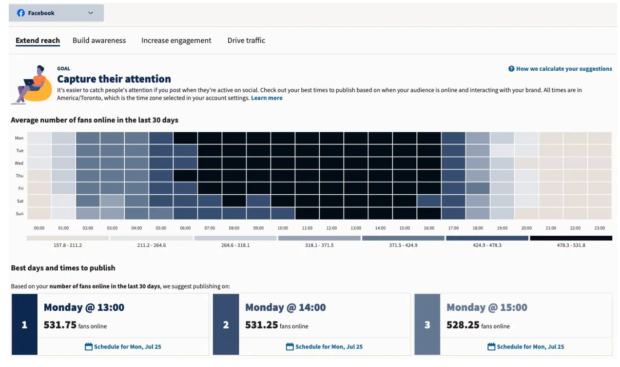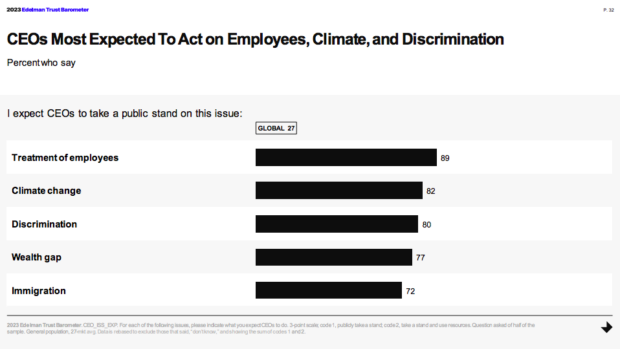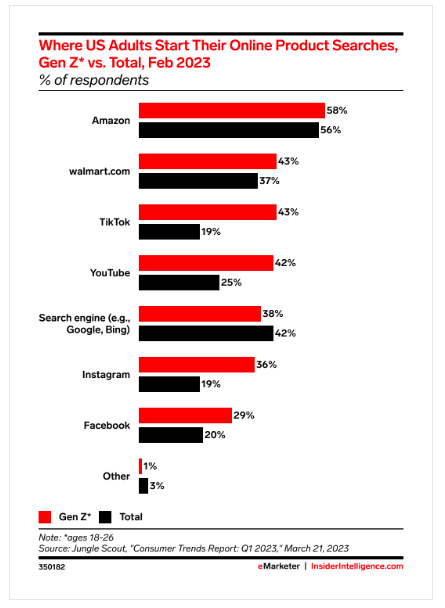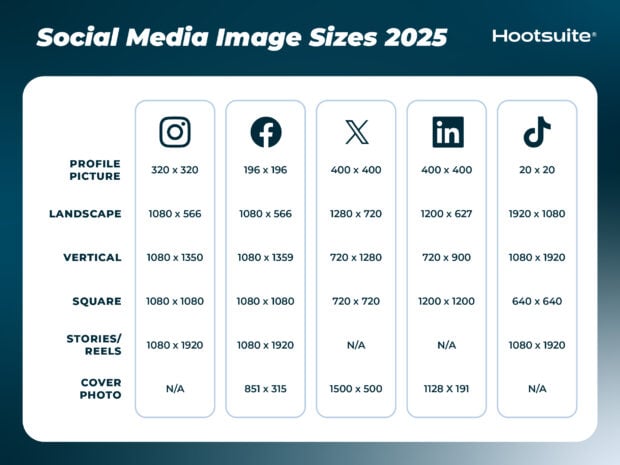Organic reach decline has been a hot topic in social marketing circles for years now. So what’s the real state of affairs? As of July 2023, the average engagement rate of an organic Facebook post ranges from 2.58% down to just 1.52%.
Organic social media marketing is far from dead. But the way marketers think about organic reach needs to change. The incorporation of AI and machine learning into social algorithms creates new opportunities to reach social users beyond your existing audience. About 15% of Facebook feed content is currently recommended from non-followed accounts. That’s all organic exposure to new audiences.
Organic reach is not just about Facebook, of course. But the world’s largest social media platform serves as a good example of what’s happening overall in the industry. Brands that are truly creative and compelling can excel in this new social environment – as long as they understand how to play the game.

What is organic reach on social media?
On social media, organic reach is the number of people who see your content through unpaid distribution – that is, without spending money to reach a specific audience.
In the early days of social media, this was simple. If you posted something, it appeared in the feeds of people who followed you. But as the amount of social content being posted every day grew exponentially, this became impossible.
Facebook says the average user has 1,500 potential stories that could appear in their Feed every time they log in. For people who follow a lot of accounts, that number could be up to 15,000. It’s impossible to see everything. So, each social media platform has proprietary algorithms that define how organic content is distributed – and who gets to see your posts.
Why is organic reach in decline?
Facebook organic reach decline
Facebook was the platform where people first started noticing major declines in organic reach. Here’s what Facebook itself has to say on the matter:
“There are many factors that affect reach, including how people are engaging with your Page’s content, how people have engaged with similar types of content in the past, the quality of the content and other factors such as time of day and whether people are on Facebook on their mobile phone or computer. It’s normal for reach to change based on these factors.”
While in some ways this reads as a non-answer, there are actually very helpful tips here about how to increase your content’s chance of being seen organically. We’ll touch on all of them in the next section.
Instagram organic reach decline
Here’s what Instagram has to say on the topic of organic reach decline:
“While we’ve heard some people believe you need to pay for ads to achieve better reach, we don’t suppress content to encourage people to buy ads. It’s a better business to make Instagram more engaging overall by growing reach for those who create the most engaging content, and sell ads to others.”
The platform uses a series of algorithms to determine which content is “most engaging overall.”. Understanding those ranking factors is the key to organic reach.
11 ways to combat declining organic reach
1. Develop a consistent and strategic content plan
Achieving organic reach requires you to think strategically about your social media content, from what you post to how often you post to the best times to reach most of your audience.
Consistency is key on all of these fronts. But remember, quality always trumps quantity. A quality content strategy and social media content calendar keeps the routine sustainable and fresh.
Think long-term. Develop content themes, regular installments, or a recurring series that trains your audience to look for valuable content drops at specific times.
On that note, what exactly is the right time to reach your target audience? It’s when your audience is online and active. Hootsuite found the best times to post on Facebook, Instagram, Twitter, and LinkedIn.
But each brand needs to double-check their own analytics and adjust accordingly. (Or use Hootsuite’s Best Time to Publish feature and get personalized recommendations for times to post on Facebook, Instagram, Twitter, and LinkedIn that will work best for your unique audience.)
2. Customize your content for each platform
Never take a one-size-fits-all approach to social media marketing, especially with organic content. To reach the most people, organic posts need to be optimized. And to optimize content, you need to understand the platform (and the associated audience) you’re optimizing for.
First off, each platform has different requirements for image size, caption length, number of hashtags, and so on. And none of the platforms love content that contains a watermark from a competitor network.
That means you can’t just create one piece of content and blast it across all your channels. Instead, use the tools built into the Hootsuite dashboard to customize your post for each platform, all from one screen.
As we mentioned right up top, social media algorithms use ranking signals to sort the order of organic content. These factors typically include relevance, timeliness, and the relationship someone has with the account.
Algorithms prioritize posts that have a high probability of generating engagement. Early engagement is often taken to be a good indicator. Learn more with our platform-specific guides:
- Instagram Algorithm
- Facebook Algorithm
- Twitter Algorithm
- LinkedIn Algorithm
- TikTok Algorithm
- YouTube Algorithm
Remember: It’s better to do one or two platforms really well than to take a scattergun approach.
3. Provide real value
Organic content needs to offer followers something of value. Give people a reason to follow you, keep following you, and share your posts. Value can take many forms – like entertainment, knowledge, motivation, or the opportunity to connect with a community.
Keep in mind that promoting your products or your brand is (in most cases) not particularly valuable content from a follower’s perspective. Of course, you can still promote your products and services in your organic content, but don’t expect those to be the posts that get the highest organic reach. That’s why we recommend the 80-20 rule.
Keep in mind that news feed algorithms prioritize original content – because that’s most valuable to both the platform and to its users. Instagram in particular has said they want to reward creators rather than aggregators.
Need some help coming up with original content ideas? Use OwlyWriter AI to round out your content calendar.
4. Create content for the audience you want – not just the audience you already have
We’ve said this a few times already, but it’s important enough that it deserves to be its own point in your organic reach strategy. Algorithms show content to people who already follow you, of course. But they also show content to people who don’t follow you (yet). But only if the signals tell the algorithm those people might be interested in your content.
Your content needs to serve your existing audience. But don’t design your strategy around them entirely. Think about the audience you want to target. Design your social marketing strategy to include lots of juicy content for them, too.
To get a sense of what content is already reaching beyond your existing follower base, look for non-followers in the Accounts Reached portion of your social media analytics. Look for patterns and trends to determine what gets the greatest new audience and make sure to incorporate those themes into your content plan.
5. Lean into video
With most social platforms leaning hard into video, the brands that create the best video content stand to see the greatest organic reach. Short videos like Reels are a particularly important way to reach audiences that don’t yet follow your brand.
Instagram head Adam Mosseri recently said: “The goal of Reels is to entertain you, and most of what you’re going to see in Reels is from accounts you do not yet follow.”
But keep in mind that not all Reels are going to explode into virality. Make sure your Reels are under 90 seconds, as these are the only ones that will be recommended to new audiences. And do a double-check to ensure your Reels are in line with the platform’s guidelines, including video quality.
Instagram says: “We aim to make certain reels less visible for other reasons, such as low-resolution or watermarked reels, reels that are muted or contain borders, reels that are majority text, reels that focus on political issues, or reels that have already been posted on Instagram.”
We’ve got Reels guides for both Facebook and Instagram to help you make the most of this organic exposure.
6. Engage your employees
An engaged community of brand advocates consistently interacting with your posts and sharing your content on social media can improve organic reach across the board. And what better place to look for brand advocates than your own team?
Engagement is a key signal to all social media algorithms, so getting the team onboard sends valuable signals for greater organic reach.
If you’re not sure how to streamline distributing content to your team (and come up with perks that will make posting worth their while), an employee advocacy platform like Hootsuite Amplify will help. It makes it safe and easy for employees to share approved social content with their friends and followers.
7. Highlight your brand values
Consumers increasingly expect to see more from brands than simply a great product.
A 2022 Edelman Trust barometer Special Report found that 63% of consumers buy or advocate for brands based on their beliefs and values, and 62% said they expect to see the brand’s stand on social issues in what they say in their advertising and website.
Plus, the 2023 Edelman trust Barometer Global Report found that the vast majority of people expect CEOs to take a public stand on issues like treatment of employees, climate change, and discrimination.
Source: Edelman Trust Barometer 2023
Build a strong social media community by showcasing the talent, diversity and values that are already part of your company’s community. Be inclusive and representative. The more people who see themselves and their values in your content, the more people there are to engage with it and share it.
Connecting with your existing follower base on this values-based level creates a more passionate community that can help send all the right signals to the social media algorithms to extend your organic reach.
8. Ask for engagement
Here’s an easy one. Create social content that nudges your existing social followers to engage, sending powerful ranking signals to the algorithm that your content should reach an expanded audience.
You can’t do this on every post, of course, and you have to be strategic. You can’t simply plead for engagement. Instead, try asking a question that followers can answer in the comments.
It’s also a good idea to (occasionally) ask followers to add you to their Favorites list, which makes sure they see more of your organic social posts. Mosseri said, “We’re going to do our very best to show that content at the very top of Feed next time you open up Instagram.” That’s a quick and easy way to maximize organic reach.
9. Collaborate and tag
Collaborating with another brand or a creator is an easy way to get your content in front of a larger organic audience. Using the Instagram Collabs feature, you and another user can share the same post or Reel in both of your feeds. The post also shares comments, likes, and shares.
Since the post is displayed to both users’ followers, this is a great way for both of the collaborators to increase their organic reach by accessing a new audience. Users can get to either collaborator’s Instagram profile with one tap, so you may gain new followers as well, which will continue to increase your organic reach over time.
A Collabs post can only include two Instagram users. If you collaborate with or feature more than one other user in your Instagram post, you can use tags to credit everyone involved. While the content doesn’t automatically appear in their feed, it does appear in the “tagged” section of their profile. Plus, tagging makes it much easier for those involved in the post to share it to their own feeds or Stories.
Enhanced tags offer even more visibility for the contributors to your post. If you work with others on a post, ask them to use enhanced tags to ensure your full contribution is clear.
10. Get to know social media SEO
You may notice we didn’t include a section on hashtags in this post. While hashtags are not totally dead on social media, they are not the powerhouse of discoverability that they used to be.
Instead, it’s important to understand social media SEO and incorporate the relevant techniques into your captions and alt tags.
Gen Z in particular uses social media like a search engine – but significant portions of the total population turn to social search when researching new products.
Source: eMarketer
In addition to our overall social SEO post, we’ve got detailed posts for SEO on several of the social platforms to help you expand your organic reach:
Bonus: Download a free social SEO checklist and follow pro tips for Facebook, Instagram, TikTok, YouTube, Twitter, and LinkedIn to get your posts seen by more people.
11. Pay to play
If you are really struggling with organic reach decline, the sure way to get your content in front of more eyeballs is to include social ads and promoted content (a.k.a. boosted posts) in your social media strategy.
To get the greatest reach, choose awareness goals for your paid ad campaign.
If you’re new to paid advertising, or you want to share content that feels more organic, you can boost existing organic posts rather than creating ads from scratch.
You can manually boost your posts from either the social platforms themselves or from Hootsuite. The social media management dashboard also allows you to boost your best-performing social content automatically based on pre-set engagement triggers, including reach.
Use Hootsuite to easily integrate your paid and organic social marketing efforts. From a single dashboard, you can schedule and publish posts, boost top-performing content, create ads, measure performance, and much more. Try it for free today.
Do it better with Hootsuite, the all-in-one social media tool. Stay on top of things, grow, and beat the competition.
The post Here’s What You Can Do About Organic Reach Decline in 2023 appeared first on Social Media Marketing & Management Dashboard.




 (@starbucks)
(@starbucks)




Recent Comments